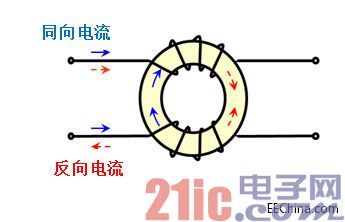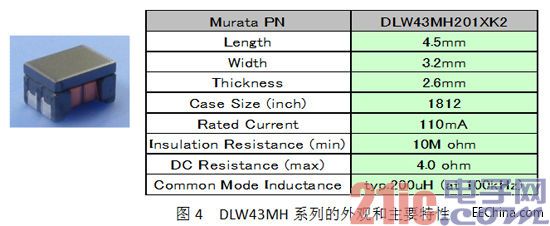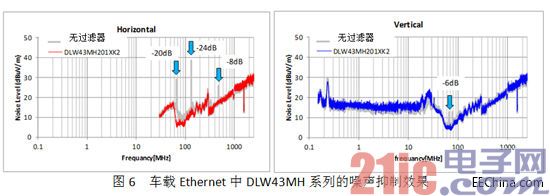Background This article refers to the address: http:// In recent years, the electronic market of the automobile market has become increasingly obvious. In the future, with the popularization of new energy vehicles, additional functions such as ADAS will become more and more abundant, and the number of electronic devices carried in each car will increase accordingly, and the types of electronic devices will also increase. Will be more and more diverse. In the electronic process of automobiles, in order to realize communication between electronic devices in the vehicle, the mounting of the in-vehicle LAN becomes indispensable. Since the in-vehicle LAN can carry out a large amount of information transmission, it is indispensable for high-speed communication, and because of the demand for high-reliability communication quality, a large number of unique in-vehicle interfaces are used. In the in-vehicle LAN, CAN (Controller Area Network) is widely used in a wide range. CAN can transmit up to 1Mbps, which is connected to the bus in a differential manner. CAN can be connected to multiple nodes on the bus to realize the structure of a one-to-many communication network. CAN is a highly reliable control method that can be widely used in a range of applications from car navigation systems to engine control systems. In recent years, with the popularization of in-vehicle camera applications, a larger amount of information such as video signals needs to be transmitted at a high speed, and an in-vehicle Ethernet (Ethernet) has also emerged. Based on the traditional industrial Ethernet technology, the in-vehicle Ethernet also uses the 100Base-TX physical layer protocol, which is an interface capable of differential transmission at 100Mbps. One of the in-vehicle Ethernet technologies is BroadR-Reach, which is promoted by the standards organization "OPEN Alliance SIG". BroadR-Reach uses a pair of UTP (unshielded twisted pair), which can achieve 100Mbps two-way transmission, and is expected to be widely used in car camera applications. 2. Noise problems in the vehicle equipment If there is a communication failure in the in-vehicle LAN, it will affect people's life safety because it directly affects the device. Therefore, there are almost strict requirements on the reliability of communication quality, especially the factors that affect the communication quality. Electromagnetic noise. The problem of electromagnetic noise is not only to prevent noise from affecting the wireless communication used in the car, but also to ensure a certain anti-interference ability for the noise generated around, thereby ensuring the quality of communication. The communication method between CAN and car Ethernet uses differential transmission, so the problem of electromagnetic noise can be reduced to some extent. Differential transmission is to transmit signals by applying current in reverse on a pair of transmission roads. The magnetic flux generated on the transmission line is offset by mutual reversal. Therefore, differential transmission is difficult to generate electromagnetic noise, which is its characteristic. . However, with regard to the noise mixed in the surrounding environment, if the noise direction is in the same direction on the transmission line, differential signal transmission is also difficult to interfere, and thus communication failure may occur. Therefore, even the differential transmission method can not completely solve the noise problem, because some reasons will still produce noise, which can roughly list the following situations: 1 output signal is unbalanced, 2 lines are unbalanced, 3 and some from the device The noise of some other circuits is combined. If the signal generated by the communication IC or the like in 1 does not become an ideal differential signal, it will generate a signal component that is transmitted in the same direction, and these components will be released as noise; if 2 is due to line length and impedance imbalance, Then the same direction noise is generated in the reverse signal. In addition, if the noise generated by other circuits inside the device in 3 is transmitted to the inside of the substrate, the radiation inside the device may also be mixed with noise. In view of the above factors, even if an in-vehicle LAN to which differential transmission is applied may generate noise for various reasons, it is necessary to adopt a corresponding noise countermeasure product. The noise countermeasures used in the in-vehicle LAN need to be of an automotive grade and have the ability to withstand higher requirements. 3. Noise countermeasure products Cocurrent current As a noise countermeasure for differential interfaces such as CAN and in-vehicle Ethernet, common mode chokes are generally used. The basic structure of the common mode choke is shown in Figure 1: There are two windings inside a core. When the reverse current corresponding to the two windings flows, the magnetic flux generated in the magnetic core will cancel each other in the opposite direction, and the magnetic flux will be generated in the same direction when the same current flows, so the impedance is high. In this way, the common mode choke can pass differential signals that are opposite to each other but can suppress common mode noise in the same direction. Figure 1 Basic structure of the common mode choke Regarding the noise countermeasure products in CAN, Murata has already commercialized the corresponding common mode choke coil DLW43SH series. The appearance and main features of this series of products are shown in Figure 2. The DLW43SH series is a common-mode choke coil for noise countermeasures used in in-vehicle LANs such as CAN and FlexRay. It is a surface mount product with a size of 4.5 × 3.2 × 2.6 mm. The common mode inductance with a maximum value of 100μH, in addition, the cutoff frequency of the DLW43SH is about 1000MHz, which can meet the high frequency requirements of high speed differential signals. The temperature range is -40~+125°C, so it is suitable for a wide range of applications in the vehicle. As a miniaturized product of the DLW43SH series, the DLW32SH series is currently under development. The appearance and main features of the series are shown in Figure 3. The DLW32SH series has a small size of 3.2 × 2.5 × 2.3mm and can achieve the same performance as the DLW43SH series. The structure is characterized by the use of a metal bracket in the terminal part of the product, which can alleviate the thermal expansion and contraction caused by temperature changes, and the applicable temperature range is -55 to +150 °C. In addition, Murata is currently developing the DLW43MH series as a common mode choke for automotive Ethernet. The appearance and main characteristics of the product are shown in Figure 4. The size of the DLW43MH series and the DLW43SH series are both 4.5×3.2×2.6mm, and the common-mode inductance value is increased to 200μH, so it can effectively suppress noise in a wide frequency band. The noise improvement effect is better because the effort is made on the winding and the common mode differential mode noise is improved. 4. Confirmation of noise countermeasure effect In order to confirm the noise suppression effect of the DLW43SH series and DLW32SH series in CAN, we performed noise measurement using the CAN evaluation board. The noise measurement was carried out in the anechoic chamber of Murata Corporation, and the peak detection was performed in the test environment of the CISPR25 standard for automotive electronic equipment. The evaluation board uses a TXD terminal of the transceiver to input a 250 kHz pulse signal to the CAN, and at the same time, the output CAN signal is transmitted to the cable to detect noise. The common mode chokes used are the DLW43SH510XK2 and the DLW32SH510VK2. The measurement results are shown in Fig. 5. High frequency noise with a signal frequency of 250 kHz was generated as shown in Fig. 5, but because a common mode choke coil was used, the noise was suppressed to a maximum of 20 dB. The next thing to say is the result of the noise countermeasure evaluation of the car Ethernet. In the measurement, the communication evaluation board corresponding to the vehicle Ethernet is used, and the noise radiated from the boards during the communication process is measured. The test environment is the same CISPR25 standard test environment as described above for CAN. The common mode choke coil used is the DLW43MH201XK2. The test results are shown in Figure 6. As is known from Fig. 6, if the common mode choke coil is not used, noise is generated at 66 MHz, and noise in a high frequency band is also generated, and when the DLW43MH201XK2 is used, the noise peak portion is relatively lowered, and the display indicates noise in a wider frequency band. Got control. 5 Conclusion Murata's noise countermeasures for the in-vehicle market introduces the common mode choke coils DLW43SH series, DLW32SH series, and DLW43MH series products with CAN and vehicle Ethernet as examples, and shows examples of noise countermeasures. In the future, Murata will continue to enrich its product lineup for the automotive market, contributing to the electronic process and solving the noise problem in the automotive market.
Ungrouped,High Quality Ungrouped,Ungrouped Details, CN Shenzhen Waweis Technology Co., Ltd. , https://www.waweis.com




